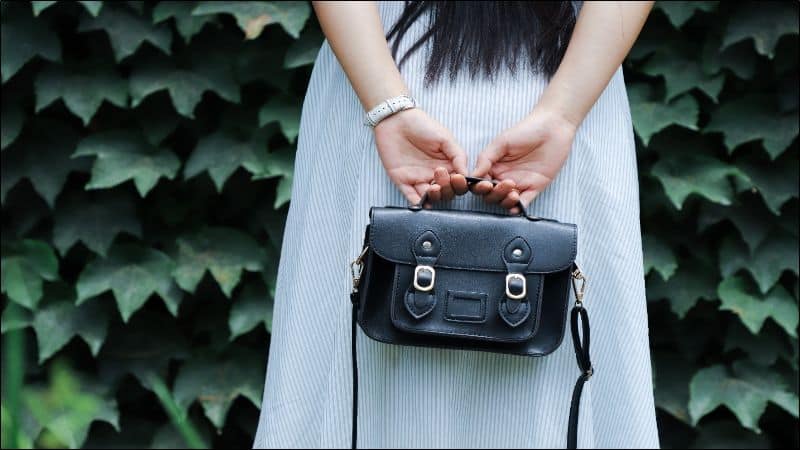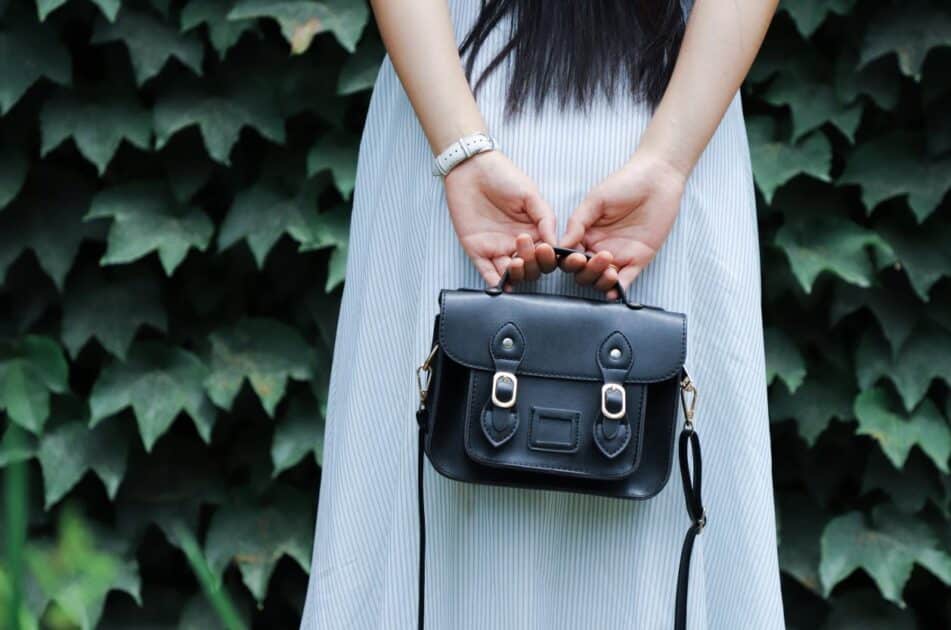Are you planning a trip and wondering if you can bring both a purse and a carry-on? Well, you’ve come to the right place! In this article, we’ll delve into the rules and regulations of airlines regarding personal items and carry-on baggage. Whether you’re a seasoned traveler or a first-time flyer, we’ll provide you with all the information you need to know to ensure a smooth and hassle-free journey.

When it comes to packing for your trip, it’s important to understand what qualifies as a personal item and what can be considered a carry-on. Airlines generally allow passengers to bring both a purse and a carry-on bag on board. However, there are certain size restrictions and limitations that you need to be aware of. In the following paragraphs, we’ll break down the guidelines set by airlines and give you tips on how to pack efficiently to make the most of your allowed baggage.
Now that you know you can bring both a purse and a carry-on, let’s dive into the specifics. Each airline has its own regulations, so it’s crucial to check with your specific carrier before you pack. Generally, a purse is classified as a personal item and can be brought on board in addition to your carry-on bag. However, keep in mind that there are size restrictions for both items. In the next section, we’ll discuss the dimensions and weight limitations for both your purse and carry-on, so you can pack smartly and avoid any surprises at the airport.
Can You Bring a Purse and a Carry On?
As a fashion enthusiast and industry expert, you might be wondering about the rules and regulations when it comes to bringing both a purse and a carry-on bag on board. Well, let’s get straight to the point and answer your questions concisely:
1. Are you allowed to bring a purse and a carry on?
Most airlines allow you to bring both a purse and a carry-on bag on board. However, there are size restrictions and limitations to consider, so it’s essential to check with your specific airline to know their regulations.
2. What are the size restrictions for a purse and a carry on?
Typically, a purse is classified as a personal item and can be brought on board in addition to your carry-on bag. However, there are size restrictions for both items. Your purse should fit under the seat in front of you and not exceed the specified dimensions, which can vary by airline.
3. How can you maximize your packing space?
Efficient packing is key to making the most of your allowed baggage. Consider these tips to maximize your packing space:
- Roll your clothes instead of folding them to save space.
- Use packing cubes or compression bags to organize and compress your items.
- Only pack essential items and avoid overpacking.
Remember, it’s crucial to check your specific airline’s regulations regarding personal items and carry-on baggage as they may have different rules and restrictions. By following these guidelines, you can ensure a smooth and hassle-free travel experience with your purse and carry-on bag by your side.
Now that you have a clearer understanding of the rules and restrictions, let’s dive deeper into the dimensions and weight limitations for both your purse and carry-on in the next section.
Carry On Restrictions
When it comes to bringing a purse and a carry-on on board, airlines have specific rules and restrictions that you need to be aware of. As a handbag enthusiast and fashion industry expert, I have the inside scoop on the carry-on restrictions you need to know about. Here’s what you need to keep in mind:
Size Matters: Most airlines have specific size limitations for both your purse and carry-on bag. The standard dimensions for a carry-on bag are usually around 22 inches x 14 inches x 9 inches. However, it’s important to note that these dimensions may vary slightly from airline to airline, so always double-check with your specific carrier.
Weight Limitations: Along with size restrictions, airlines also have weight limitations for carry-on bags. Generally, the weight limit for a carry-on bag is around 35 pounds. However, this can also differ depending on the airline, so be sure to check their specific guidelines.
One Bag Rule: Remember that in addition to your purse, you are typically allowed to bring one carry-on bag on board. This means you’ll need to pack strategically to ensure you have everything you need within the given limits. Consider choosing a versatile, spacious carry-on bag that can accommodate both your essentials and your purse.
Additional Items: Airlines usually allow passengers to bring additional items like a jacket, umbrella, or reading materials on board as long as they fit within the size restrictions. Be sure to take advantage of this to make your travel experience more convenient and comfortable.
Packing Tips: To make the most of your allowed baggage, try packing smartly. Use packing cubes or compression bags to maximize space and keep your belongings organized. Place heavier items at the bottom of your carry-on to distribute the weight evenly. And don’t forget to utilize any pockets or compartments in your carry-on bag to efficiently store your essentials.
What Counts as a Carry On?
As a handbag enthusiast and fashion industry expert, you might be wondering what exactly qualifies as a carry-on item. Well, let’s dive right into it!
When it comes to airlines, a carry-on generally refers to a smaller bag that you bring on board with you. It’s important to note that each airline may have slightly different regulations, so always check with your specific airline for their rules and guidelines.
Typically, a carry-on bag should fit in the overhead bin or under the seat in front of you. The dimensions can vary, but a common size limit is around 22x14x9 inches (or 56x36x23 cm). Keep in mind that some airlines may have specific weight limits as well.
You might be wondering about your beloved handbag. In most cases, a purse or handbag is considered a personal item. This means you can bring it in addition to your carry-on bag. Personal items are usually smaller and should fit under the seat in front of you. Examples include a small backpack, laptop bag, or camera bag.
« Discover the Top 10 Stylish Coin Purse Designs You Need in Your Handbag Collection
Discover the Ultimate Guide to Perfecting Purse Strap Length – A Must-Read for Every Fashionista »
To make the most of your allowed baggage, consider choosing a handbag that can also function as a personal item. Opt for a versatile bag with multiple compartments, so you can stay organized while traveling.
Remember, be mindful of the contents of your bag. Liquids in containers over 3.4 ounces (100 milliliters) will need to comply with the TSA’s liquid restrictions and can only be carried in a quart-sized bag. Additionally, certain items like sharp objects or flammable materials may not be allowed on the plane, so double-check the airline’s prohibited items list.
Size and Weight Requirements for a Carry On
As a handbag enthusiast and fashion industry expert, let’s dive into the size and weight requirements for a carry on. Airlines enforce specific guidelines to ensure that carry on bags fit in the overhead bin or under the seat in front of you.
Here’s what you need to know:
- Dimensions: Most airlines have size restrictions for carry on bags. Typically, the maximum dimensions allowed are around 22 inches long, 14 inches wide, and 9 inches tall. Be sure to check with your specific airline for their exact measurements.
- Weight Limit: In addition to size, airlines often impose weight limits for carry on bags. The weight limit can range anywhere from 20 to 40 pounds. Weigh your bag before heading to the airport to avoid any surprises at the check-in counter.
- Luggage with Wheels: If your carry on has wheels, make sure to include the measurements for the wheels when calculating its overall dimensions. Some airlines include the wheels in their size restrictions.
- Personal Item: Remember, a purse or handbag is considered a personal item and can be brought in addition to your carry on bag. Consider choosing a handbag that can also serve as your personal item to maximize your allowed baggage.
Now that you know the size and weight requirements for a carry on, you can effectively plan your packing strategy. Fit in your essentials while staying within the airline’s regulations. Keep in mind that certain items like liquids over 3.4 ounces and prohibited items are not allowed in your carry on bag.
Can a Purse Count as a Personal Item?
As a handbag enthusiast and fashion industry expert, you may be wondering if you can bring both a purse and a carry-on bag on your next flight. The good news is that most airlines allow passengers to bring both items, as long as they adhere to the size and weight restrictions.
Here’s what you need to know:
- Personal Item Allowance: Airlines typically allow passengers to bring a carry-on bag and a personal item onboard. While the size and weight requirements for carry-on bags are more strict, personal items have a bit more leeway.
- Size Restrictions: Most airlines consider a purse or handbag as a personal item, as long as it fits under the seat in front of you. The dimensions for personal items vary between airlines, but they are generally around 18 inches long, 14 inches wide, and 8 inches tall.
- Choosing the Right Handbag: To maximize your allowed baggage, opt for a handbag that can serve as both a purse and a personal item. Look for a bag that has enough space for your essentials, but is still compact enough to fit under the seat.
- Weighing Your Bags: While personal items usually don’t have specific weight restrictions, it’s important to keep them lightweight. This way, you can ensure that your overall baggage stays within the airline’s weight limits for carry-on bags.
Remember, it’s always a good idea to check the specific guidelines of your airline before your trip. Some budget airlines or smaller aircraft may have more strict limitations on personal items. By planning ahead and choosing the right handbag, you can enjoy the convenience of having both a purse and a carry-on bag on your journey.
Conclusion
You now have a clear understanding of whether you can bring a purse and a carry-on when traveling on a flight. Most airlines allow passengers to bring both a purse and a carry-on bag, as long as they meet the size and weight restrictions. To make the most of your allowed baggage, consider choosing a handbag that can serve as both a purse and a personal item. However, it’s always a good idea to check the specific guidelines of your airline before your trip, as some budget airlines or smaller aircraft may have stricter limitations on personal items. By being aware of the rules and regulations, you can ensure a smooth and hassle-free travel experience. So pack your purse and carry-on confidently, knowing that you’re well-informed and prepared for your journey ahead. Safe travels!










